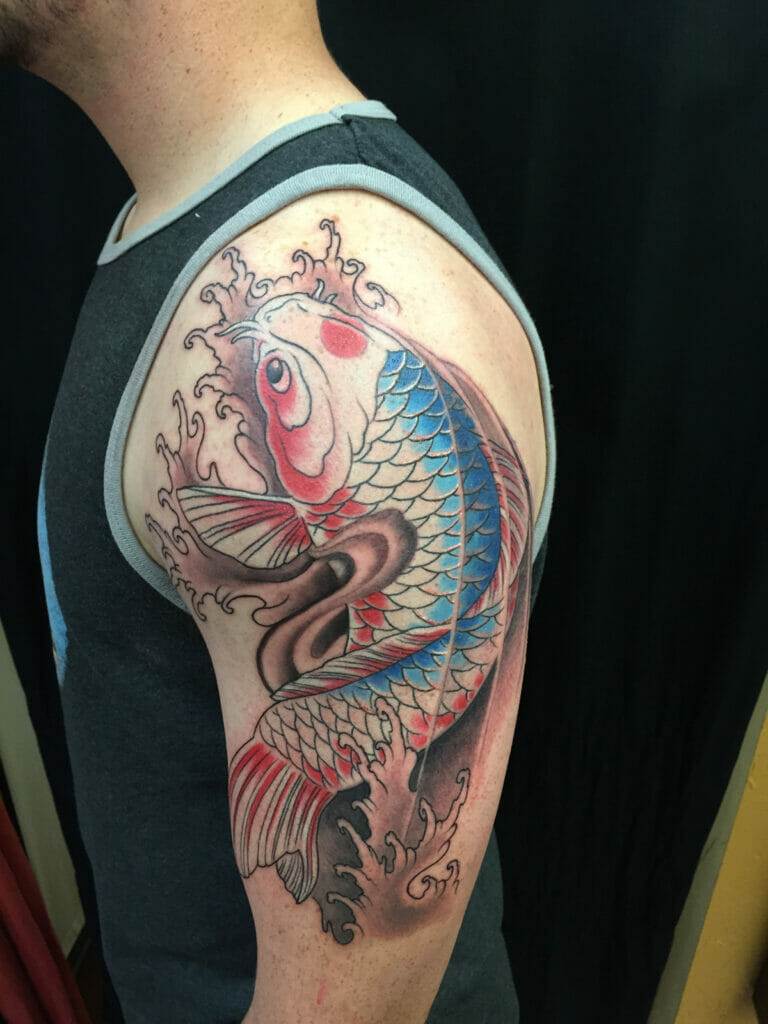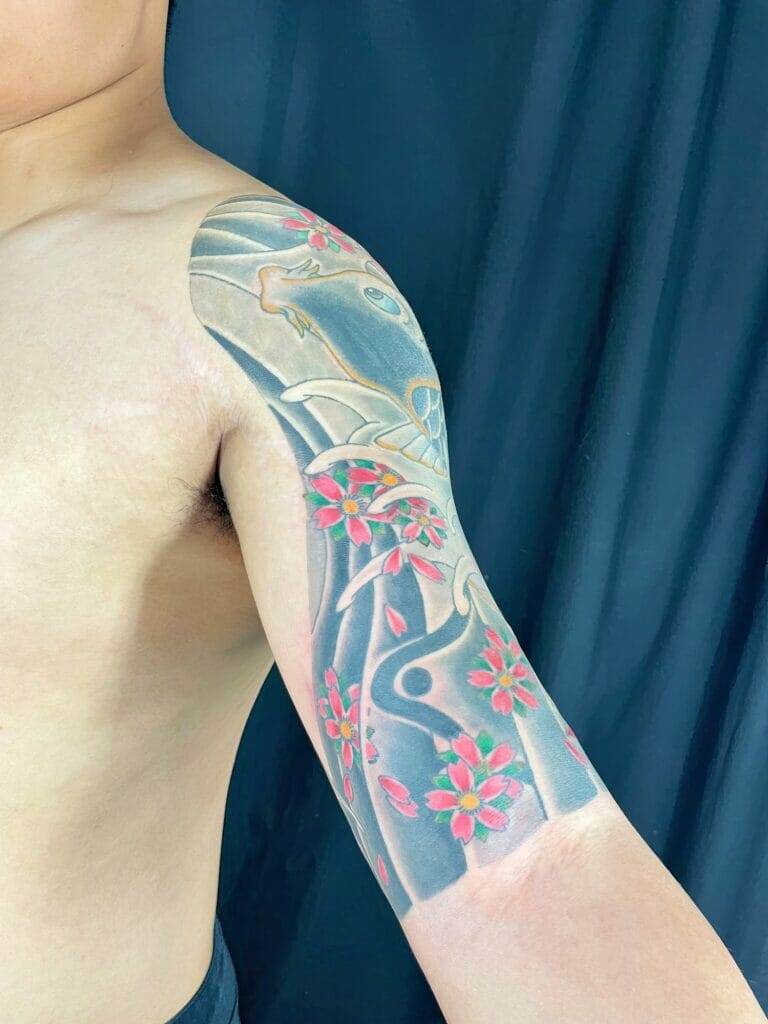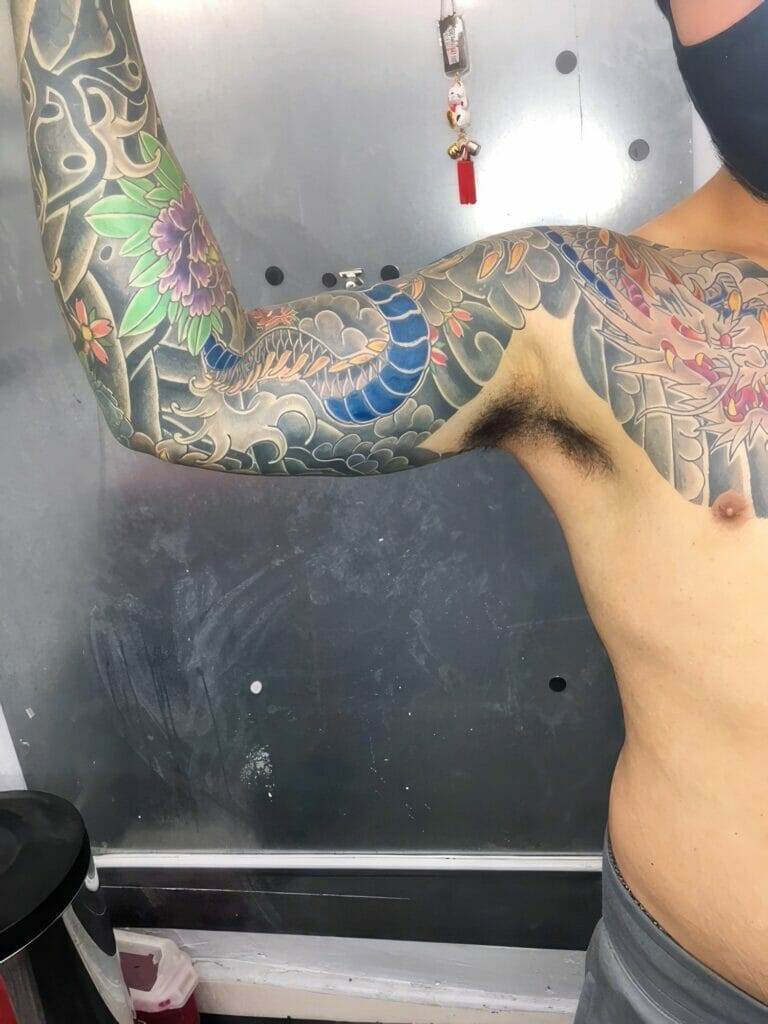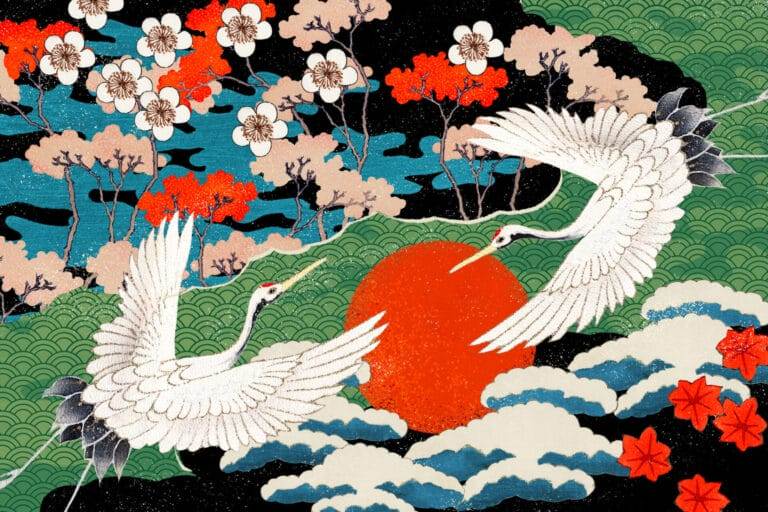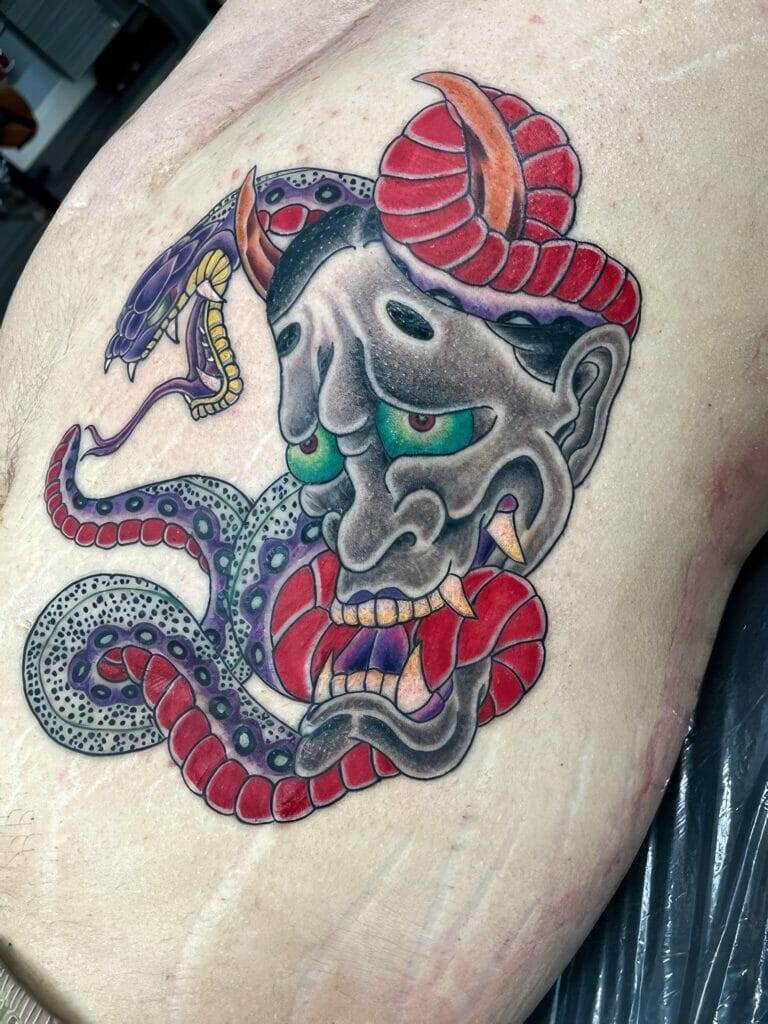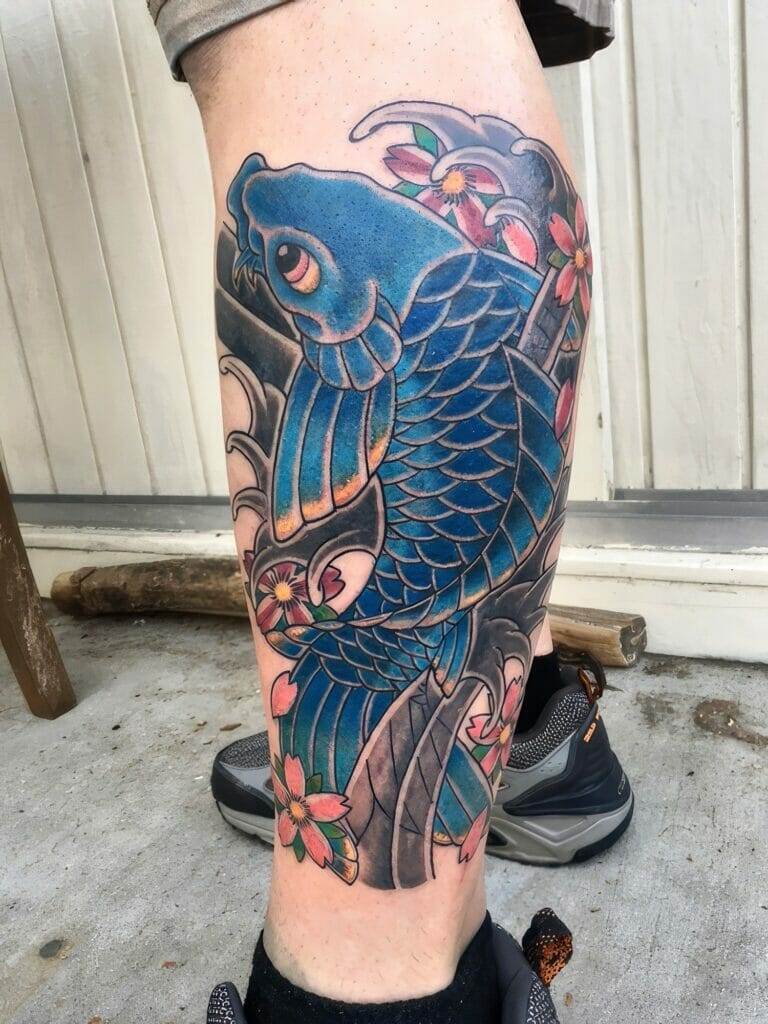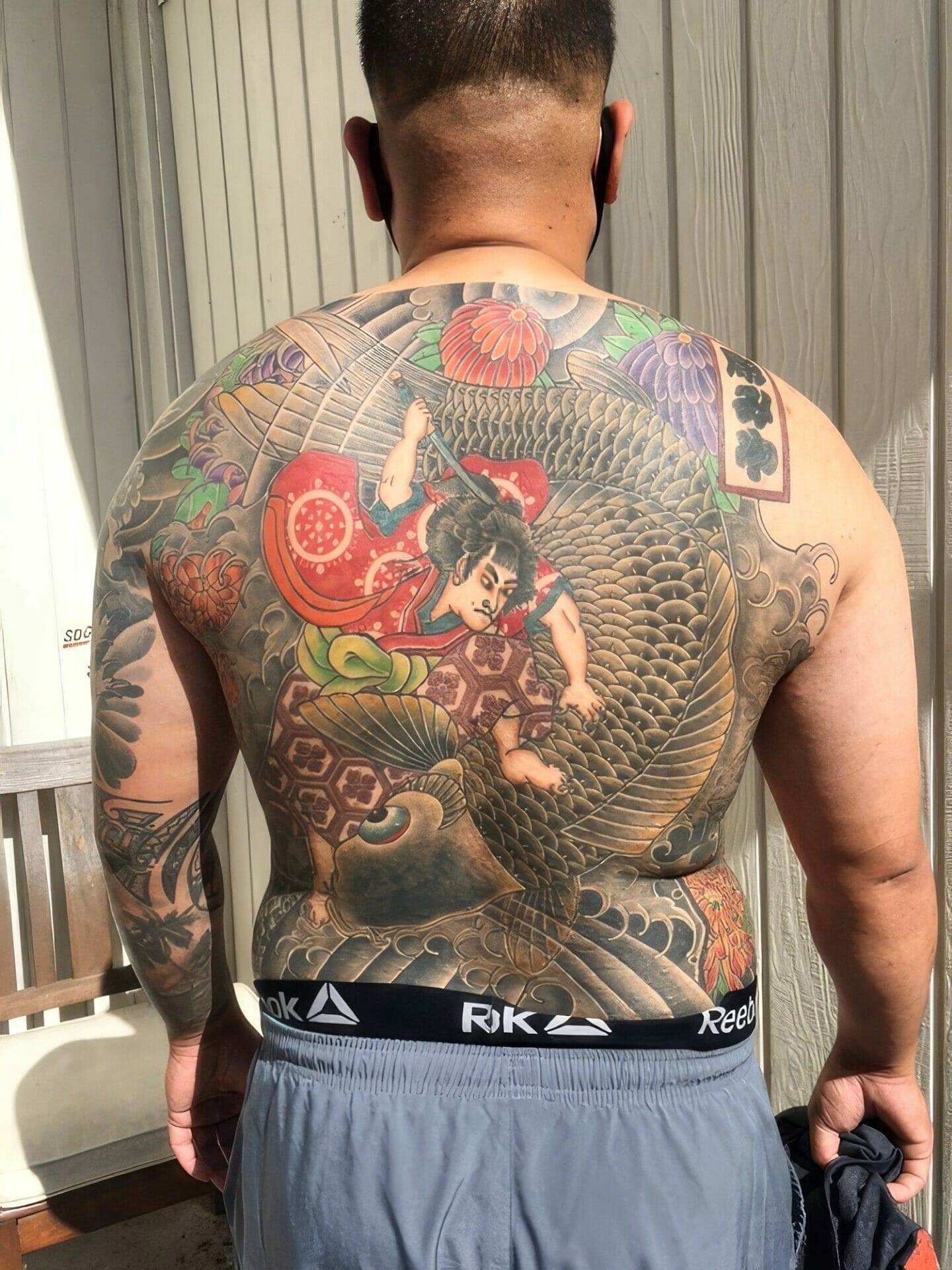
Japanese style tattoos, also known as irezumi, have a rich history and cultural significance that goes beyond mere body art. These tattoos are characterized by their vibrant colors, intricate designs, and deep symbolism. Understanding the history and culture behind Japanese tattoos is essential in appreciating their beauty and significance. This article will delve into the origins of Japanese style tattoos, the techniques used in their creation, the symbolism and meaning behind their motifs, the role of yakuza in their history, the influence of Japanese art and culture on modern tattooing, the revival of traditional Japanese tattooing in the modern era, the evolution of Japanese tattoo design, the controversy surrounding Japanese tattoos in modern society, the globalization of Japanese tattooing, and the challenges and opportunities in preserving their legacy.
The Origins of Japanese Style Tattoos: A Brief History
Tattooing has a long history in Japan, dating back thousands of years. The earliest evidence of tattooing in Japan can be traced back to the Jomon period (10,000 BCE – 300 BCE), where clay figurines with tattoo-like markings have been discovered. However, it was during the Yayoi period (300 BCE – 300 CE) that tattooing began to take on a more significant role in Japanese culture.
During this period, Japan had contact with China and Korea, which influenced its tattooing practices. Chinese characters were often used as tattoos to signify social status or religious beliefs. Additionally, the Ainu people, an indigenous group in Japan, had a tradition of facial tattooing for women as a form of beauty and identification.
It was during the Edo period (1603-1868) that traditional Japanese tattooing as we know it today began to develop. This was a time of peace and stability in Japan, which allowed for the flourishing of arts and culture. Tattooing became popular among commoners as a form of self-expression and as a way to ward off evil spirits. Tattoo artists, known as horishi, began to specialize in this art form and developed their own unique techniques and styles.
The Art of Irezumi: Traditional Japanese Tattooing Techniques
Traditional Japanese tattooing, known as irezumi, is a painstaking and intricate process that requires years of training and mastery. There are two main techniques used in traditional Japanese tattooing: hand-poking and machine tattooing.
Hand-poking, also known as tebori, is the traditional method of tattooing in Japan. It involves using a bamboo or metal rod with a cluster of needles attached to the end. The artist dips the needles into ink and then manually punctures the skin to create the design. This technique allows for greater control and precision, but it is also more time-consuming and requires a high level of skill.
Machine tattooing, on the other hand, involves using an electric tattoo machine to create the design. This method is faster and more efficient than hand-poking, but it lacks the same level of control and precision. Many modern tattoo artists use a combination of both techniques, depending on the design and client’s preferences.
In addition to the techniques used, traditional Japanese tattooing also relies on specific tools and materials. Traditional ink, known as nara ink, is made from natural ingredients such as soot and water. The needles used in hand-poking are often made from steel or bamboo, while machine tattooing uses disposable needles.
Symbolism and Meaning: Exploring the Iconography of Japanese Tattoos
One of the defining features of Japanese style tattoos is their rich symbolism and meaning. Traditional motifs such as dragons, koi fish, cherry blossoms, and geisha are often used to convey specific messages or represent certain qualities.
Dragons, for example, are a popular motif in Japanese tattoos and symbolize strength, wisdom, and protection. Koi fish, on the other hand, represent perseverance and determination, as they are known for their ability to swim upstream against strong currents. Cherry blossoms, with their fleeting beauty, symbolize the transient nature of life. Geisha, with their elegance and grace, represent femininity and beauty.
While traditional motifs have specific meanings, it is also important to note that Japanese tattoos are highly personalized and often tell a story about the individual wearing them. Clients work closely with their tattoo artists to create a design that reflects their personality, experiences, and aspirations.
In recent years, there has been a rise in contemporary interpretations and adaptations of traditional Japanese motifs. Tattoo artists are incorporating elements from other cultures and art styles to create unique and innovative designs. This fusion of traditional and modern elements allows for greater creativity and self-expression.
The Role of Yakuza in the History of Japanese Tattoos
The yakuza, Japan’s organized crime syndicates, have played a significant role in the history of Japanese tattoos. In the Edo period, tattooing was associated with criminality and was used as a form of punishment for criminals. The yakuza adopted tattoos as a way to distinguish themselves from the general population and to intimidate their rivals.
Yakuza tattoos, known as irezumi, are often full-body suits that cover the entire back, arms, and legs. These tattoos are highly detailed and elaborate, featuring traditional motifs such as dragons, tigers, and samurai warriors. They serve as a visual representation of the yakuza’s loyalty, bravery, and status within the organization.
However, in the Meiji period (1868-1912), tattooing was criminalized in Japan as part of the government’s efforts to modernize the country and suppress criminal activities. This led to a decline in traditional tattooing practices and forced many tattoo artists underground.
In recent years, attitudes towards tattoos in Japan have started to change. While there is still some stigma associated with tattoos, especially in more conservative areas, there is a growing acceptance and appreciation for the art form. Many young people in Japan are now getting tattoos as a form of self-expression and to connect with their cultural heritage.
The Influence of Japanese Art and Culture on Modern Tattooing
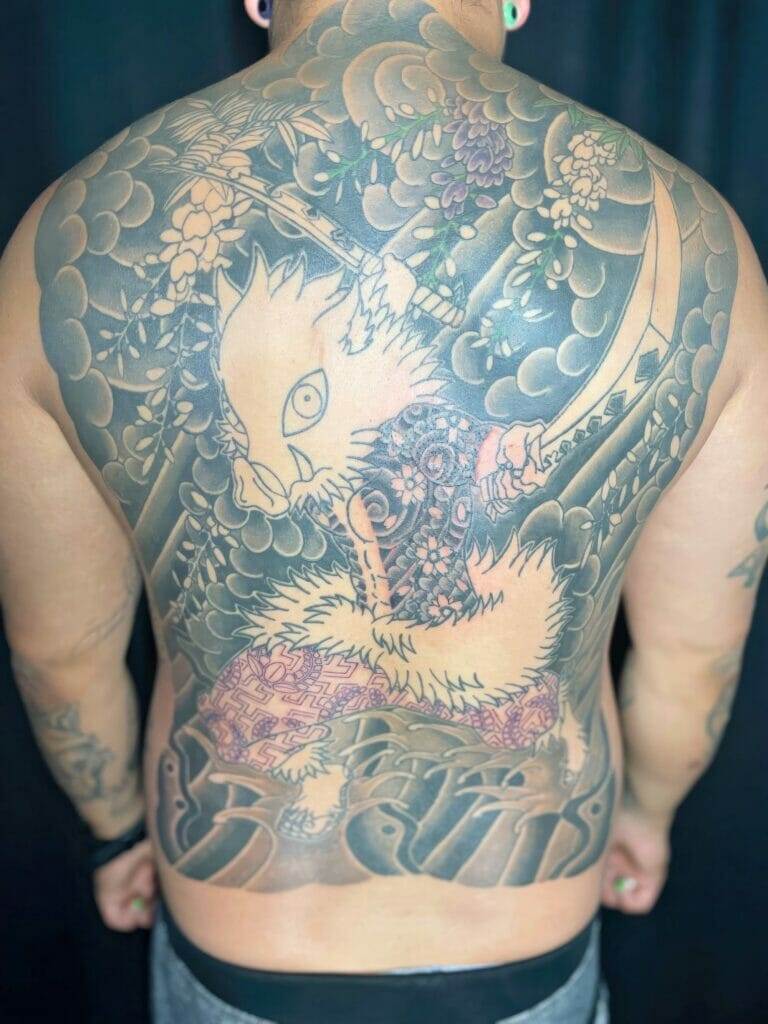
Japanese art and culture have had a significant influence on modern tattooing around the world. Japanese style tattoos have gained popularity in the West, with many people embracing the vibrant colors, bold designs, and rich symbolism.
The incorporation of Japanese aesthetics in tattoo design can be seen in the use of traditional motifs such as dragons, koi fish, and cherry blossoms. The clean lines, bold colors, and attention to detail that are characteristic of Japanese art are also evident in many tattoo designs.
Cross-cultural exchange and fusion have also played a role in the evolution of Japanese tattooing. Tattoo artists from different backgrounds are incorporating elements from Japanese art and culture into their own work, creating unique and innovative designs. This fusion of styles allows for greater creativity and diversity within the tattoo industry.
The Revival of Traditional Japanese Tattooing in the Modern Era
In recent years, there has been a revival of traditional Japanese tattooing techniques and motifs. Tattoo artists and enthusiasts are working to preserve and promote this ancient art form, which was on the verge of extinction.
One of the challenges in reviving traditional techniques is finding skilled tattoo artists who have undergone proper apprenticeships and training. Traditional tattooing requires years of practice and mastery, and finding individuals who are willing to dedicate themselves to this art form can be difficult.
However, there are also opportunities for innovation and creativity within the revival of traditional Japanese tattooing. Many tattoo artists are pushing the boundaries of what is considered traditional by incorporating contemporary elements into their designs. This allows for greater artistic expression while still honoring the roots of Japanese tattooing.
The revival of traditional Japanese tattooing has had a significant impact on the tattoo industry and culture. It has brought attention to the artistry and craftsmanship involved in creating these tattoos and has helped to dispel some of the negative stereotypes associated with tattoos.
The Evolution of Japanese Tattoo Design: From Traditional to Neo-Japanese
While traditional Japanese tattoos continue to be popular, there has been a shift towards more modern interpretations of Japanese motifs. Neo-Japanese tattoos, also known as new school or contemporary Japanese tattoos, combine traditional elements with contemporary styles and techniques.
Neo-Japanese tattoos often feature bold colors, exaggerated proportions, and a mix of traditional and modern motifs. They may incorporate elements from other art styles such as realism, surrealism, or abstract art. This fusion of styles allows for greater creativity and self-expression while still paying homage to the traditional roots of Japanese tattooing.
The Controversy Surrounding Japanese Tattoos in Modern Society
Despite the growing acceptance and popularity of Japanese style tattoos, there is still some stigma and discrimination against tattooed individuals in Japan. Many public establishments such as hot springs, gyms, and public pools have strict no-tattoo policies, as tattoos are still associated with criminality and anti-social behavior.
In other countries, there are legal and social issues surrounding tattooing. Some countries have laws that restrict or ban certain types of tattoos, while others have strict regulations on tattooing practices. Additionally, there are debates over cultural appropriation and respect when it comes to non-Japanese individuals getting Japanese style tattoos.
It is important to have open and respectful conversations about these issues in order to promote understanding and acceptance. Education and cultural exchange can help bridge the gap between different perspectives and foster a more inclusive society.
The Globalization of Japanese Tattooing: A Cultural Phenomenon
Japanese style tattoos have become a global cultural phenomenon, with people from all over the world embracing this art form. The spread of Japanese style tattoos can be attributed to various factors, including the influence of popular culture, the rise of social media, and the increasing accessibility of travel.
Japanese style tattoos have had a significant impact on fashion, art, and popular culture. Many fashion designers and artists draw inspiration from Japanese motifs and incorporate them into their designs. Japanese tattoo artists have also gained international recognition for their skill and artistry, with many traveling around the world to showcase their work.
However, it is important to approach Japanese style tattoos with cultural understanding and appreciation. It is not just about copying the aesthetics, but also understanding the history, symbolism, and cultural significance behind these tattoos.
Preserving the Legacy of Japanese Style Tattoos: Challenges and Opportunities
Preserving the legacy of Japanese style tattoos is crucial in order to ensure that this ancient art form continues to thrive. There are several challenges and opportunities in preserving traditional techniques and motifs.
One of the challenges is finding skilled tattoo artists who have undergone proper apprenticeships and training. Traditional tattooing requires years of practice and mastery, and finding individuals who are willing to dedicate themselves to this art form can be difficult.
Collaboration between tattoo artists, scholars, and cultural institutions is essential in preserving the legacy of Japanese style tattoos. Tattoo artists can learn from traditional masters and pass on their knowledge to future generations. Scholars can conduct research and document the history and cultural significance of Japanese tattoos. Cultural institutions can provide support and resources for preservation efforts.
There are also opportunities for innovation and creativity within the preservation of traditional Japanese tattooing. Many tattoo artists are pushing the boundaries of what is considered traditional by incorporating contemporary elements into their designs. This allows for greater artistic expression while still honoring the roots of Japanese tattooing.
Japanese style tattoos have a rich history and cultural significance that goes beyond mere body art. Understanding the history and culture behind these tattoos is essential in appreciating their beauty and significance. From the origins of Japanese style tattoos to the art of irezumi, the symbolism and meaning behind their motifs, the role of yakuza in their history, the influence of Japanese art and culture on modern tattooing, the revival of traditional Japanese tattooing in the modern era, the evolution of Japanese tattoo design, the controversy surrounding Japanese tattoos in modern society, the globalization of Japanese tattooing, and the challenges and opportunities in preserving their legacy, there is much to explore and appreciate about Japanese style tattoos. By fostering cultural understanding and appreciation, we can ensure that this ancient art form continues to thrive for generations to come.
If you’re fascinated by the art of tattooing and want to delve deeper into the world of Japanese style tattoos, you won’t want to miss the article on Redemption Ink’s website titled “Tattoo Artist Highlight: R2.” This article shines a spotlight on the talented tattoo artist R2 and explores their unique style and techniques. Whether you’re considering getting a Japanese style tattoo or simply appreciate the artistry behind it, this article is a must-read. Check it out here!

